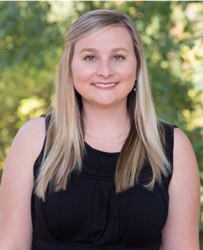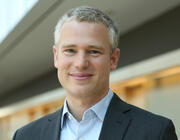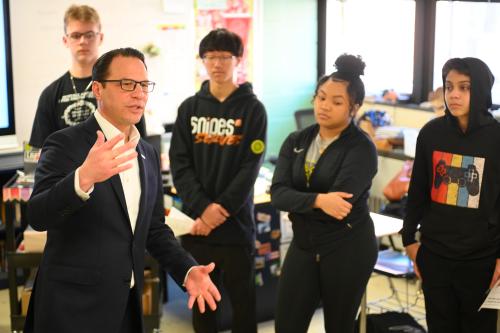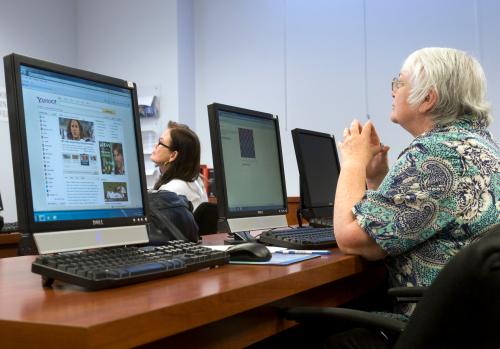In response to declining interest in teaching, local teacher shortages, and the lack of teachers of color, districts are embracing “Grow Your Own” (GYO) programs to recruit an effective and diverse teacher workforce. GYO programs aim to support individuals from the local community to become teachers, and all 50 states have adopted some type of program. The U.S. Departments of Education and Labor, along with state leaders ranging from Michigan Governor Gretchen Whitmer (D) to Florida Governor Ron DeSantis (R), have sought to catalyze further growth through investments, suggesting this may be one of the rare education initiatives with bipartisan support.
GYO programs are a popular teacher recruitment strategy because of their potential to simultaneously solve multiple teacher workforce challenges. By recruiting locally, GYO programs may increase local teacher supply, because teaching candidates are more likely to teach close to home. This influx of local teachers could possibly reduce teacher shortages, which are concentrated in particular schools and regions. In addition, GYO programs may promote teacher diversity, because these programs recruit from groups—such as paraprofessionals and high school students—that are often more diverse than the current teacher workforce. Further, GYO programs may lead to improved teacher retention and effectiveness. Local teachers have higher retention rates and are slightly more effective than other teachers, and research documents that teachers of color are a critical resource for the academic success of all students, especially students of color.
Still, despite their popularity and promise, we know little about how, and how well, these GYO programs work. Our recent study seeks to advance our understanding of these programs by describing the characteristics of a sample of 94 self-described local (74) and statewide (20) GYO initiatives and examining the alignment between their program features and desired outcomes. Our analyses serve to inform our proposed definition for what constitutes a GYO program in practice, illuminate the prevalence of GYO initiatives with promising features, and assess their potential to increase teacher supply, alleviate teacher shortages, and diversify the profession.
GYO initiatives are a diverse class of teacher pipeline programs, not a specific teacher recruitment strategy.
We find only two common characteristics across the GYO programs in our sample: 1) They aim to expand the teacher supply, and 2) they recruit participants who live, work, or attend a school within particular school districts. Beyond these commonalities, programs vary widely in their target populations and program features. We display the prevalence of each participant type in Figure 1. Although high school students are the most common participants in GYO programs, other programs recruit adults, such as paraprofessionals, college students, and community members. Given this variation in target population, it is no surprise that there is no standard programming. GYO initiatives can include scholarships to earn bachelor’s degrees or certification, alternate or accelerated pathways to enrollment in a traditional or alternative certification program, community college transfer programs, extracurricular activities, high school coursework, dual enrollment programs, and teacher residencies. Of the local GYO programs in our sample, there are at least 49 different combinations of program features and participant types with no more than five sharing the same characteristics.
Given these results, we conclude that GYO has become an umbrella term for many different types of teacher pipeline programs that recruit locally. For example, a teaching scholarship, a teacher residency, and an alternative certification program all can be considered GYO programs if each focuses its recruitment efforts locally. At the same time, programs with these features that cast a wider net when recruiting are not “growing their own.”
Which program characteristics might produce the best outcomes?
Given the variety in GYO programs, it is important to identify which program features are most likely to improve teacher supply. One way is by increasing interest in teaching through exposure to the profession. David Blazar and colleagues’ recent study of the Teacher Academy of Maryland—a high school teacher training program that leads to college credit—finds that exposure to teaching-related courses increases the likelihood of becoming a teacher by 46%.
Still, even if individuals are interested in teaching, they may not be able to enter the profession if they lack the necessary credentials and do not have the time or resources to complete them. Research indicates that supports such as test preparation for licensure exams, scholarships and living stipends, and peer networks help reduce barriers to earning certification, especially for participants of color.
The results displayed in Figure 2 show that GYO programs do have characteristics associated with increasing teacher supply. GYO programs targeting high school students mainly aim to increase interest in teaching by providing students with exposure to, and experience with, teaching through coursework and extracurricular activities (75%). Initiatives targeting adults primarily aim to reduce barriers to entry by providing certification (93%) and financial support (71%). However, few programs, especially high school programs, provide enough funds to cover the full costs of teacher certification, making financial costs a possible obstacle to teaching for participants.
GYO programs that are successful at increasing teacher supply may not ultimately solve workforce challenges unless GYO participants get certified in shortage subjects, share the racial/ethnic backgrounds of their students, and persist in teaching. We also display the prevalence of GYO programming consistent with these goals in Figure 2.
Certifying teachers in hard-to-staff subjects, such as math or special education, is critical in filling vacancies. However, fewer than one-third of GYO initiatives (and 45% of adult GYO programs) in our sample require participants to earn certification in any particular subject, let alone a hard-to-staff subject. Dedicated efforts to recruiting people of color, although politically challenging in some contexts, can be found in about a quarter of initiatives in our sample. Intentional recruitment efforts are likely necessary to diversify the profession because race-neutral policies are unlikely to shift teacher demographics. Programming that improves teacher effectiveness likely requires more intensive training such as teacher residency programs. Evidence from the Boston Teacher Residency suggests that residency participants are ultimately more effective and more likely to be retained than other novice teachers. Only one-third of GYO initiatives in our sample have each of these features, with a higher percentage of adult GYO programs possessing them.
GYO programs have potential, but they aren’t a panacea.
There’s a lot to like about GYO programs, and there’s reason to be optimistic about their effects. We also need to be realistic, though. While GYO programs can increase teacher supply, their impacts may be small and take years to materialize. High school GYO participants, the most common participant type, will need to complete high school and college before entering the profession. This lag between high school teaching experiences and classroom entry leaves a lot of time for participants to exit the leaky teacher pipeline, possibly lowering the yield of high school GYO programs. Although adult GYO programs may have higher yields and their effects may emerge faster, these programs tend to have fewer participants.
Finally, efforts that aim to increase the teacher supply without improving the state of the profession may not be enough to retain a diverse and effective workforce. Like other teachers, GYO participants may confront stagnant wages, a lack of autonomy, challenging working conditions, and the looming threat of teacher layoffs that cause them to leave the classroom or deter them from entering in the first place. This can perpetuate the revolving door of teachers and the need to constantly recruit teacher candidates.








